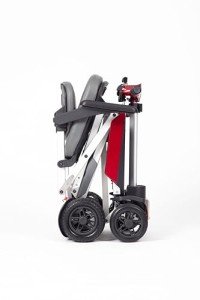What Mobility Devices Experts Want You To Be Educated
Understanding Mobility Devices: Enhancing Independence and Quality of Life
In today's hectic world, the desire for mobility is universal. Nevertheless, particular medical conditions or age-related obstacles can hinder movement, resulting in a continuous search for assistance. Mobility devices serve as important tools to enhance self-reliance, improve quality of life, and allow individuals to engage completely in their neighborhoods. This post provides a detailed overview of mobility devices, including their types, features, choice criteria, and more.
Types of Mobility Devices
Mobility devices range from basic aids to complex equipment, tailored to satisfy different requirements. Below is a table summarizing common kinds of mobility devices:
Type of Device
Description
Suitable For
Walkers
Four-legged support devices that offer superior stability while strolling.
Individuals needing extra assistance.
Walking sticks
Single or three-legged sticks that improve balance and assistance walking.
Those with minor mobility difficulties.
Wheelchairs
Seats installed on wheels, readily available in handbook and electric versions.
Individuals with limited or no mobility.
Scooters
Electric lorries created for outside usage and ease of navigation.
Those who can't stroll fars away.
Crutches
Devices that help people transfer weight far from an injured leg.
Individuals recuperating from leg injuries.
Rollators
Walkers with wheels, seats, and brakes for improved mobility.
Users needing rest options while strolling.
Lift Chairs
Reclining chairs that assist users in standing and sitting down.
Seniors or those with mobility constraints.
Mobility Scooters
Small electric lorries for limited mobility, typically used outdoors.
People needing help over fars away.
Key Features of Mobility Devices
When selecting a mobility device, numerous key functions should be considered to make sure optimum performance and ease of use:
- Weight Capacity: Understanding the gadget's weight limitation is essential for safety and efficiency.
- Adjustability: Devices ought to be adjustable in height and width to fit the user easily.
- Mobility: Lightweight and foldable choices are vital for users who travel or need transportation.
- Stability and Safety: Look for features like anti-tip wheels and sturdy structures to enhance security.
- Relieve of Use: Simple mechanisms and easy to use styles can make a considerable distinction in day-to-day usage.
- Convenience: Ergonomic styles and padded seats can improve the user experience.
Selecting the Right Mobility Device
Selecting the best mobility gadget can be an overwhelming task. Here are some steps to direct the decision-making procedure:
- Assess Needs: Evaluate the person's mobility challenges and day-to-day activities.
- Consult a Professional: Engage health care experts who can supply recommendations based upon the individual's physical condition.
- Trial Options: If possible, trial different devices to determine comfort and functionality.
- Review Budget: Consider the expense of the device, including any additional functions or adjustments needed.
- Research Options: Determine the best brand names and models by reading reviews and comparisons.
Table: Comparative Analysis of Popular Mobility Devices
Device
Benefits
Disadvantages
Walkers
Excellent stability, promotes strolling.
Bulky, may restrict movement in small areas.
Walking sticks
Lightweight, improves balance.
May not supply enough assistance for serious mobility concerns.
Wheelchairs
Ideal for those with substantial mobility constraints.
Can be troublesome, specifically in indoor environments.
Scooters
Great for outdoor usage, simple to maneuver.
Restricted indoor use, much heavier.
Rollators
Provides rest option, simple to move.
May require more area than conventional walkers.
Lift Chairs
Comfy, helps transition from sitting to standing.
More expensive, larger footprint.
Regularly Asked Questions (FAQs)
1. What is a mobility gadget?
A mobility gadget is any tool developed to help individuals in moving and browsing their environment. This consists of walkers, wheelchairs, scooters, and crutches.
2. How do I know which mobility device is best for me?
Consider your specific mobility difficulties, physical capabilities, and way of life requirements. Consulting with healthcare experts can also supply tailored recommendations.
3. Are mobility devices covered by insurance?
Lots of insurance strategies, including Medicare, may cover particular mobility devices. It's important to consult your insurance company for specific coverage information.
4. Can I rent a mobility device instead of purchasing one?
Yes, many medical supply shops and drug stores provide leasings for mobility devices. This choice is beneficial for individuals with temporary mobility issues.
5. How can check this link right here now maintain my mobility device?
Regular maintenance is essential. It includes cleaning up the device, inspecting for wear and tear, and guaranteeing all parts are operating correctly.
The Impact of Mobility Devices on Quality of Life
Mobility devices substantially enhance the quality of life for individuals with limited mobility. They cultivate self-reliance, motivate social interaction, and enhance access to vital services and leisure activities.
- Increased Independence: Users can browse their areas, attend events, and take part in pastimes without counting on others.
- Social Engagement: Mobility devices facilitate participation in social gatherings, consequently combating feelings of isolation.
- Boosted Safety: Devices supply stability and lower the risk of falls, promoting user self-confidence.
Mobility devices are more than just tools for movement; they are entrances to self-reliance and quality living. By understanding the different types of mobility aids readily available, their key functions, and factors to consider for selecting the right gadget, individuals can make educated choices about their mobility requires. Ultimately, the ideal mobility device can cause a more active, fulfilling life. Whether it's a walker, wheelchair, or scooter, the right option contributes substantially to enhancing the mobility and independence of users.
